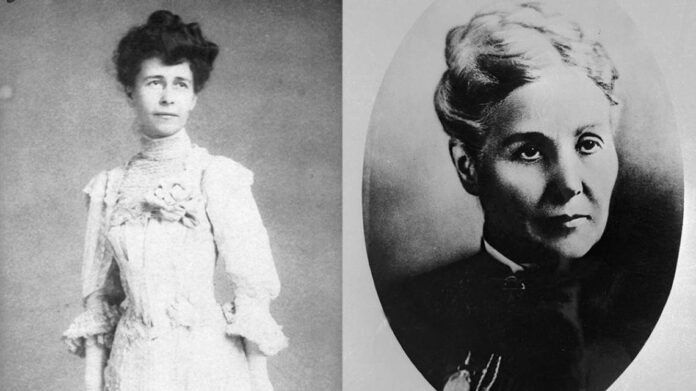The founder of Mother’s Day, the force who spearheaded the holiday to honor the hard work of women across the nation, eventually wanted to shut down the very movement she created because it turned into a commercial business.
Uniting Women
Jarvis’ mother, Ann Reeves Jarvis, had 13 children, only four of whom reached adulthood. She was involved in organizing Mothers’ Day Work Clubs and a Mothers’ Friendship Day following the Civil War to unite women after so much discord in the country. She died on the second Sunday in May in 1905 and her daughter, Anna, was devastated by the loss.
To honor the woman who gave birth to her and raised her, Anna kicked off the first Mother’s Day events in May 1908. One was held in Grafton, West Virginia, her hometown, and the other at Wanamaker’s department store in Philadelphia, Penn., where she lived.

Credit: NMGiovannucci Via Wikimedia Commons (CC BY-SA 4.0).
Jarvis wanted to make the commemoration an official national holiday, so she sent her suggestion to politicians and newspapers. She was passionate about her cause even though she never had children of her own. In 1910, the governor of West Virginia made it an official holiday. Two years later, a variety of churches, towns, and states had also adopted the holiday, and Jarvis put together the Mother’s Day International Association. President Woodrow Wilson made Mother’s Day a permanent holiday in 1914, designating the second Sunday in May as the official date.
A Misunderstood Movement
Unfortunately, Jarvis’ vision for Mother’s Day and how other people interpreted the holiday was very different. “She wanted Mother’s Day to be a very private acknowledgment of all the mother does for the family,” Katharine Antolini, a history professor at West Virginia Wesleyan College told. “It was very sweet.” It’s worth noting the punctuation in the holiday: it’s a singular possessive, not plural, so the intent was for families to honor a single matriarch—not all the mothers a person knows in their life.
Before long, Jarvis made some observations she found unsettling, such as florists, card companies, and candy manufacturers profiting off of the holiday. Public interest groups also used Mother’s Day to promote political statements. This appropriation did not sit well with Jarvis. By 1922, she supported boycotts of florists that increased the prices of white carnations each May (the flower was Ann Jarvis’ favorite). The following year, Jarvis threatened legal action against the New York Mother’s Day Committee for planning a huge celebration. Organizers ultimately canceled the event. In 1925, Jarvis faced charges of disorderly conduct, which were later dismissed, after the American War Mother’s used a white carnation for its Mother’s Day celebration against Jarvis’ wishes.

Anna Jarvis via Wikimedia Commons.
In her opinion, Mother’s Day was a time for children to visit their moms or write them long letters. She called pre-printed cards and ready-made telegrams “maudlin” and “insincere” and a lazy way to commemorate “a woman who has done more for you than anyone else in the world.”
Fighting Back
Jarvis’ discontent continued over the next decade. In 1935, she criticized First Lady Eleanor Roosevelt for combining Mother’s Day with a fundraising effort involving high maternal and infant mortality rates. Jarvis later created a petition to rescind the holiday and went door-to-door around Philadelphia for support.
Jarvis became increasingly reclusive during the 1940s and was reportedly regretful that she started Mother’s Day in the first place. In 1944 at the age of 80, she was placed in a mental asylum. She died four years later completely broke due to the debt she incurred involving legal battles over the holiday.
While Jarvis never profited over the holiday, it’s big business for retailers. People spend over $23 billion a year to celebrate their moms every May, according to the National Retail Foundation. They purchase everything from cards, flowers, candy, clothing, and jewelry to smartphones and other tech devices.
And, in case you’re wondering, Father’s Day was first celebrated in 1910, but it didn’t become a nationwide holiday until 1972. It’s celebrated on the third Sunday of June. Children reportedly spend $14.3 billion on their fathers, which is significantly less than what they spend on their mothers.
By Noelle Talmon, contributor for Ripleys.com
EXPLORE THE ODD IN PERSON!
Hits: 0












